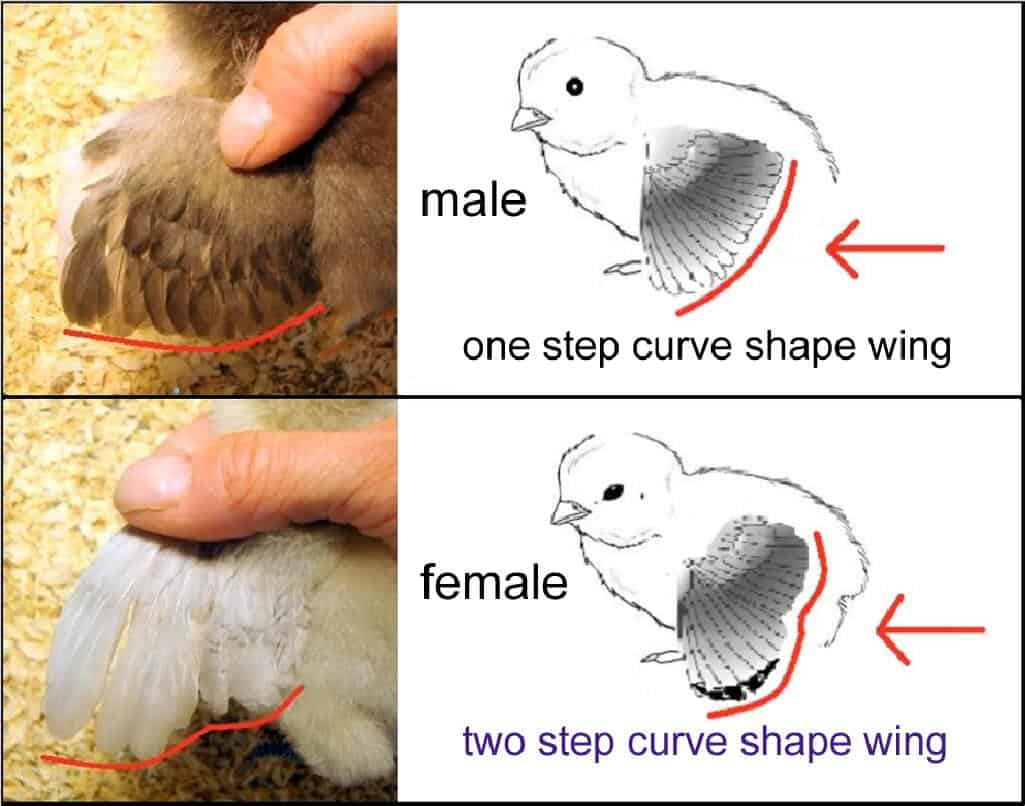How to Sex a Chicken: Identifying Male and Female Chickens
Determining the sex of chickens, also known as sexing, is a valuable skill for both novice and experienced chicken owners. Accurately identifying the gender of your birds can help you make informed decisions about your flock’s management, breeding, and housing. In this comprehensive guide, we will explore various methods for sexing chickens at different stages of their life cycle, including day-old chicks, growing pullets and cockerels, and mature hens and roosters.
Understanding Chicken Sexing Terminology
Before delving into the sexing methods, it’s essential to understand the terminology used to describe the different stages of a chicken’s life:
- Chick: A newly hatched chicken, either male or female
- Pullet: A female chicken under one year old
- Hen: A mature female chicken, usually over one year old
- Cockerel: A male chicken under one year old
- Rooster: A mature male chicken, usually over one year old
Sexing Day-Old Chicks
Determining the sex of day-old chicks can be challenging, as the differences between males and females are often subtle and require a trained eye. Here are a few methods commonly used for sexing chicks:
Vent Sexing
Vent sexing, also known as cloacal sexing, is a technique used by professional hatcheries to determine the sex of day-old chicks. It involves gently everting the chick’s vent (cloaca) and examining the internal sex organs. This method requires extensive training and practice to achieve a high accuracy rate.
Wing Sexing
Wing sexing, or feather sexing, is another method used to sex day-old chicks. It relies on differences in the development of wing feathers between males and females. In some breeds, male chicks develop wing feathers later than females, resulting in visible differences in the wing feather patterns.
Down Sexing
Down sexing is a technique used for certain breeds, such as Barred Plymouth Rocks and Australorps. It involves examining the color and pattern of the chick’s down (fluffy baby feathers). Male chicks may have a distinct spot or stripe on their head or wing web that is absent in females.It’s important to note that the accuracy of these methods can vary depending on the breed, the individual chick’s characteristics, and the skill of the person performing the sexing.
Sexing Growing Pullets and Cockerels
As chicks mature into pullets and cockerels, it becomes easier to distinguish their sex based on physical characteristics and behavior:
Comb and Wattle Development
Male chicks, known as cockerels, typically develop larger combs and wattles (the fleshy growths on their head and neck) compared to females. The comb and wattles of cockerels grow faster and become more pronounced as they mature.
Feather Development
The feather development of pullets and cockerels can also help in determining their sex. Cockerels often have longer, more pointed hackle and saddle feathers, while pullets have shorter, more rounded feathers.
Behavior
Cockerels tend to exhibit more aggressive and dominant behaviors, such as crowing, flapping their wings, and chasing other birds. They may also display courtship behaviors, such as circling around hens and making mating calls.
Sexing Mature Hens and Roosters
Identifying the sex of mature chickens is generally easier than sexing day-old chicks or growing pullets and cockerels. Here are some key characteristics to look for:
Comb and Wattle Size
Roosters typically have larger, more pronounced combs and wattles compared to hens. The color of the comb and wattles may also be more vibrant in roosters.
Feather Shape and Color
Roosters often have longer, more pointed hackle, saddle, and tail feathers compared to hens. The colors of the rooster’s feathers may be more vibrant and distinct, while hens tend to have more muted colors.
Body Size and Posture
Roosters are generally larger in size and have a more upright, alert posture compared to hens. They may also have a more muscular build and a more prominent breast.
Behavior
Roosters are known for their loud crowing, which can be heard early in the morning. They may also display aggressive behaviors, such as flapping their wings, chasing other birds, and defending their territory.
Accuracy and Reliability of Sexing Methods
It’s important to note that no sexing method is 100% accurate, and there may be some variation depending on the individual chicken and the skill of the person performing the sexing. In some cases, a chicken’s sex may not be definitively determined until it reaches sexual maturity and begins exhibiting clear male or female characteristics.
Conclusion
Sexing chickens is a valuable skill for chicken owners, as it allows them to make informed decisions about their flock’s management, breeding, and housing. By understanding the different methods for sexing chickens at various stages of their life cycle, you can more accurately identify the sex of your birds and ensure the well-being of your flock.
FAQ Section
Q1: When is the best time to sex day-old chicks?
A1: The best time to sex day-old chicks using methods like vent sexing or wing sexing is within the first 24-48 hours after hatching. As the chicks grow older, it becomes more difficult to accurately determine their sex using these techniques.
Q2: Can I sex my chicks at home?
A2: While some methods, such as wing sexing, can be performed at home, it’s important to note that these techniques require practice and a trained eye to achieve accurate results. Vent sexing, on the other hand, should only be performed by professional hatcheries and trained individuals to avoid harming the chicks.
Q3: How accurate are the different sexing methods?
A3: The accuracy of sexing methods can vary depending on the technique, the breed of chicken, and the skill of the person performing the sexing. Vent sexing, when performed by trained professionals, can achieve an accuracy rate of 90-95%. Wing sexing and other methods may have lower accuracy rates, especially when performed by inexperienced individuals.
Q4: Can I keep a rooster in my backyard flock?
A4: Whether you can keep a rooster in your backyard flock depends on local ordinances and the size of your flock. Some areas may have restrictions on keeping roosters due to noise concerns. It’s essential to check with your local authorities and consider the size of your flock and the potential for aggressive behavior before deciding to keep a rooster.
Q5: At what age can I definitively determine the sex of my chickens?
A5: The age at which you can definitively determine the sex of your chickens varies depending on the breed and individual characteristics. In general, as chickens mature and reach sexual maturity, it becomes easier to identify their sex based on physical characteristics and behavior. However, in some cases, a chicken’s sex may not be definitively determined until it begins exhibiting clear male or female characteristics.For more information on chicken sexing and related topics, you can refer to the Wikipedia page on Chick Sexing.
Summary Table of Sexing Methods
| Method | Accuracy | Timing |
|---|---|---|
| Vent Sexing | 90-95% (when performed by professionals) | Day-old chicks |
| Wing Sexing | Varies (depends on breed and experience) | 3-7 days old (for most breeds) |
| Down Sexing | Varies (depends on breed) | Day-old chicks |
| Comb and Wattle Size | Reliable (as chicks mature) | Growing pullets and cockerels |
| Feather Development | Reliable (as chicks mature) | Growing pullets and cockerels |
| Body Size and Posture | Reliable (as chickens mature) | Mature hens and roosters |
| Behavior | Reliable (as chickens mature) | Growing pullets and cockerels, mature hens and roosters |



